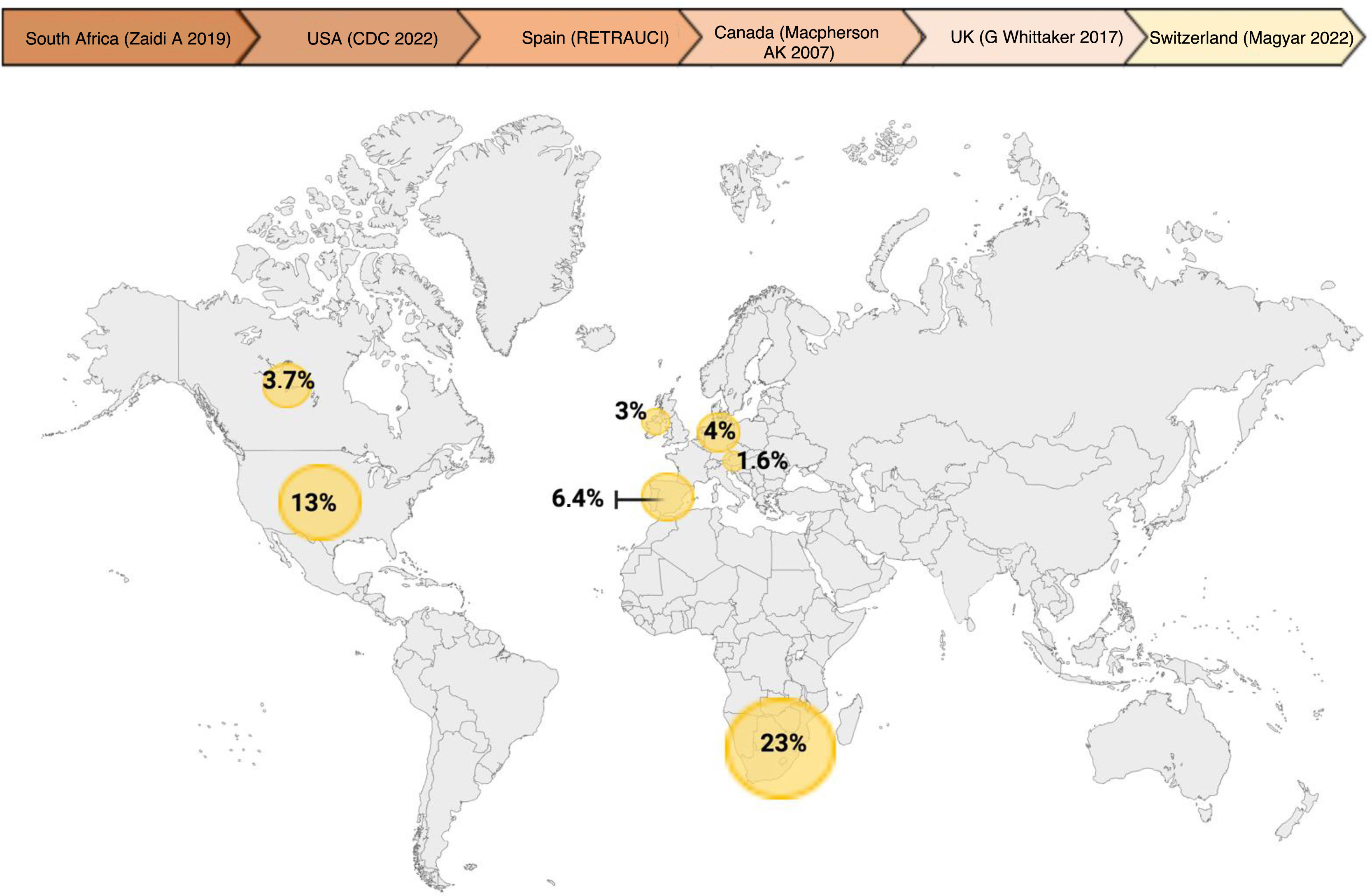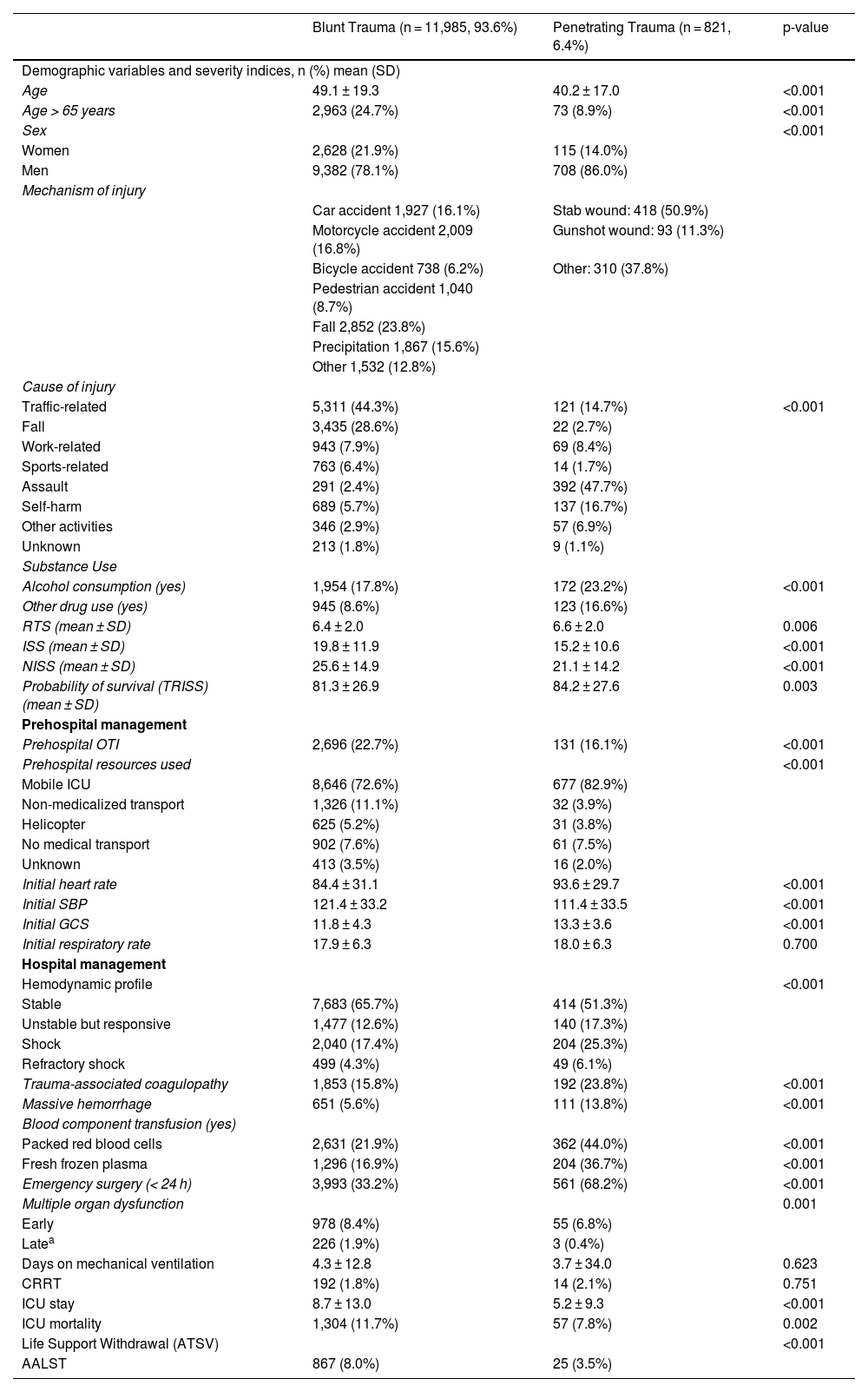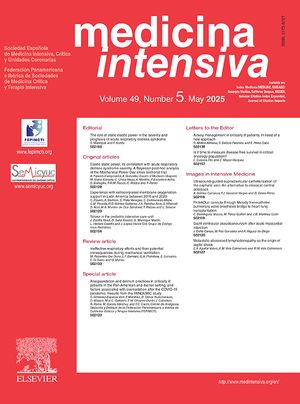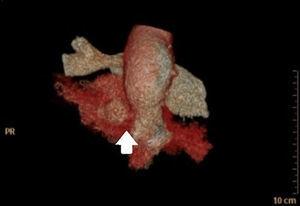To describe the epidemiology of penetrating trauma, mortality associated factors and its management in Spanish intensive care units.
DesignMulticenter, prospective registry. A comparison is established between two cohorts defined by the type of trauma (blunt and penetrating).
PatientsPatients with traumatic injury admitted to the participating ICUs from June 2015 to June 2022.
InterventionsNone.
Main variable of interestEpidemiology, injury pattern, prehospital and hospital care, resource utilization, and clinical outcomes.
Results12,806 patients were eligible, of whom 821 (6.4%) suffered penetrating trauma; 418 patients (50.9%) from stab wounds, 93 (11.3%) from gunshot wounds, and 310 (37.8%) from other objects. The most common intent was assault (47.7%). The mean ISS was 15.2 ± 10.6 in penetrating trauma and 19.8 ± 11.9 in blunt trauma (p < 0.001). ICU mortality was 7.8% compared to 11.7% in blunt trauma, with deaths more frequently occurring within the first 24 hours (64% vs. 39%). Factors associated with mortality included female sex, prior use of antithrombotic agents, older age, higher NISS score, and the presence of cranial trauma or shock.
ConclusionsPenetrating trauma is an emergent pathology in our context with high complexity, highlighting the need for focused study and documentation, protocol development, and resource optimization to provide quality care.
Describir la epidemiología del trauma penetrante, los factores asociados a mortalidad y su manejo en unidades de cuidados intensivos españolas.
DiseñoRegistro multicéntrico y prospectivo. Se establece una comparativa entre dos cohortes definidas por el tipo de trauma (contuso y penetrante).
PacientesPacientes con enfermedad traumática que ingresan en las UCI participantes de junio 2015 a junio 2022.
IntervencionesNinguna.
Variable de interés principalEpidemiología, patrón lesional, atención prehospitalaria y hospitalaria, consumo de recursos y resultados clínicos.
Resultados12806 pacientes fueron elegibles, de los cuales 821 (6,4%) sufrieron un trauma penetrante; 418 pacientes (50,9%) por arma blanca, 93 (11,3%) por arma de fuego y 310 (37,8%) por otro objeto. La intencionalidad más habitual fue la agresión (47,7%). La media de ISS fue de 15,2 ± 10,6 en trauma penetrante y de 19,8 ± 11,9 en trauma contuso (p < 0,001). La mortalidad en UCI fue del 7,8% frente al 11,7% en trauma contuso, siendo más frecuente el fallecimiento en las primeras 24 h (64% frente al 39%) en el grupo de traumatismo penetrante. Los factores que se asociaron a mayor mortalidad fueron el sexo femenino, la toma previa de antitrombóticos, la edad, mayor puntuación en la escala NISS y la presencia de traumatismo craneal o shock.
ConclusionesEl trauma penetrante supone una patología emergente en nuestro entorno y con alta complejidad, por lo que es necesario incidir en el estudio y registro de la patología, protocolización y optimización de recursos para ofrecer una atención de calidad.
Article
Go to the members area of the website of the SEMICYUC (www.semicyuc.org )and click the link to the magazine.











